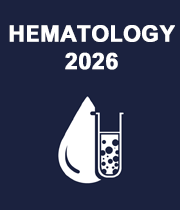Title : Mystery of the red puffy man
Abstract:
Coronavirus disease 2019 (COVID-19) has shown high incidences of thrombosIs, especially pulmonary embolism. Superior Vena Cava Syndrome (SVCS) can be caused by external compression by tumors or intrinsic thrombosis. Here, we report a rare case of SVC thrombosis with a history of COVID-19 four months prior to presentation.
A 64-year-old male with a history of former smoking and hypertension presented with bilateral upper extremity (UE) swelling, facial plethora and dyspnea of 1-week duration. He had not had a Primary Care visit in the last 15 years and didn’t have medical insurance. CT chest with contrast showed findings of SVC thrombosis extending up to the junction of the azygous vein and back into the subclavian vein. There was no evidence of intrathoracic mass/ lymphadenopathy compressing the vessel with collateralization below the diaphragm and opacification of the inferior vena cava suggesting venous return being completely below the diaphragm. CT abdomen and pelvis with contrast showed no abnormal masses or lymphadenopathy in the abdomen or pelvis.
He denied testosterone therapy, no family history of thromboses. He was vaccinated with 2 doses of Pfizer for COVID-19 and 1 booster dose. He underwent a venogram with balloon angioplasty and suction thrombectomy of the SVC. His hypercoagulable work-up for JAK2 V617F point mutation for myeloproliferative disorders, factor V Leiden mutation, antiphospholipid syndrome, and prothrombin G20210A mutation were negative. He had normal protein S and protein C levels. He underwent a lower extremity (LE) venous duplex study that showed no evidence of deep vein thrombosis (DVT). Given that the patient had no medical insurance, he was discharged on Coumadin with an international normalized ratio (INR) goal of 2–3 as he couldn’t afford direct-acting oral anticoagulants. His subsequent follow-up DVT study, 6 months postoperatively, showed no evidence of DVT involving UE. He was scheduled for an outpatient chest CT venogram that was canceled by the patient owing to a lack of medical insurance.
Postoperatively 6 months later, he presented with left-sided neck swelling with palpable cervical lymph node and underwent CT neck with contrast that showed an enlarged 1.5 cm left supraclavicular lymph node. Ultrasound-guided core needle biopsy showed lymph nodal tissue involvement by the vascular transformation of sinuses (VTS) and small lymphocytic lymphoma (SLL) /chronic lymphocytic leukemia (CLL). VTS is an incidental finding with efferent lymphatic and venous obstruction by thrombus. Flow cytometry showed 23% of monoclonal lambda B-cell population expressing CD5 and CD23, moderate CD20 and dim CD11c expression, and CD38 undetected with no evidence of lymphocytosis/ anemia/ thrombocytopenia/ splenomegaly consistent with stage 0/low-risk disease. Hence, he did not meet the treatment criteria for CLL/SLL. It was deemed unlikely for a supraclavicular lymph node of 1.5 cm in diameter to be contributory to his history of SVC thrombosis with no evidence of lymphadenopathy seen on prior radiographic work-up at the time of presentation for SVC thrombosis making COVID-19 induced hypercoagulability as the pathophysiology behind his SVC thrombosis.
Audience Takeaway:
- Case report highlighting high risk of SVC syndrome from COVID-19 related hypercoagulability.
- Reflect upon the essence of anticoagulation in COVID-19 patients depending upon disease severity keeping in light the risk of bleeding.
- Importance of hypercoagulability and malignant work-up to rule out any underlying hypercoagulable state irrespective of age at presentation.
- Importance of having a Primary Care Provider and dedicated regular follow-ups with age-appropriate preventive screenings.



